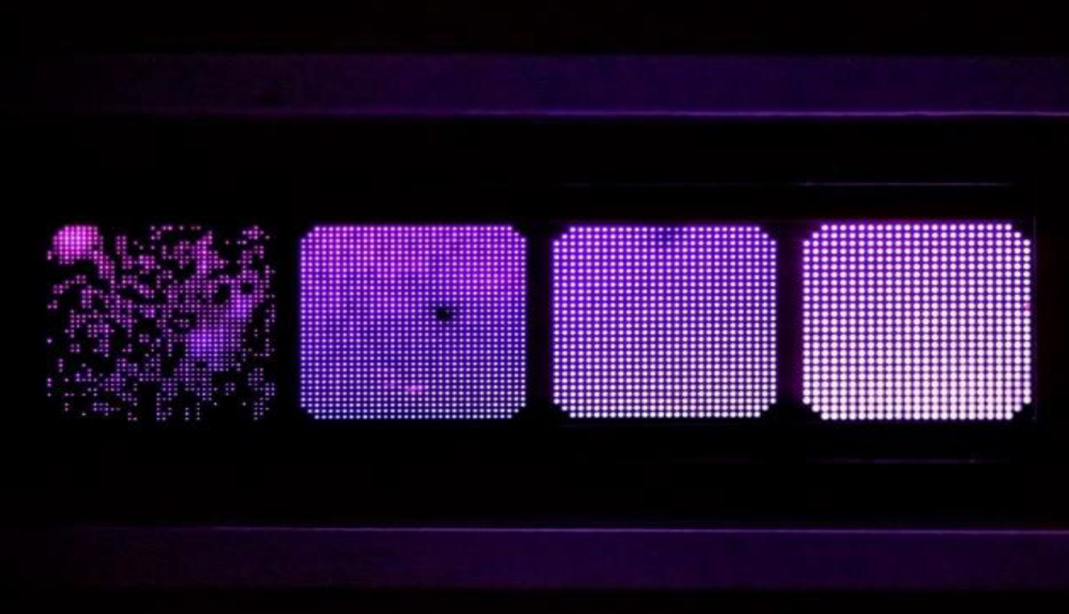Open position: Bachelor thesis
Determination of the conversion of CO₂ in a microplasma array using emission spectroscopy

The microplasma array is based on a dielectric barrier discharge (DBD) and is to be used to convert environmentally harmful gases such as volatile organic compounds (VOCs) or CO₂. The aim is to make the conversion of substances as energy-efficient as possible by integrating catalysts into the discharge in future. However, precise knowledge of the converted densities is essential for successful integration. In particular, the conversion of CO₂ to CO and O plays a central role, as it forms the basis for quantifying the converted quantities. Measuring these densities is often a challenge. Although methods such as TALIF (laser method) or FTIR spectroscopy (IR absorption spectroscopy) are possible, they can only be used to a limited extent in plasma operation.
A promising alternative to measuring the CO and O densities in the discharge is the use of actinometry. This spectroscopic method makes it possible to analyze the emission of the plasma directly by observing the emissions of the species of interest and an actinometer gas with a known density. While the measurement of the emission spectrum is relatively easy to perform, the evaluation and determination of the densities is a much greater challenge, since, among other things, more precise knowledge of the electron energy distribution function (EEDF) is required.
The project is part of project area A6 in SFB 1316, which deals with the investigation of interactions between DBDs and catalysts.
Contact:
Henrik van Impel (NB 5/171),
Judith Golda (NB 5/127),
Prerequisites:
Previous knowledge of plasma physics is desirable but not required.
When?: by arrangement
Laboratory tour: NB 5/173

